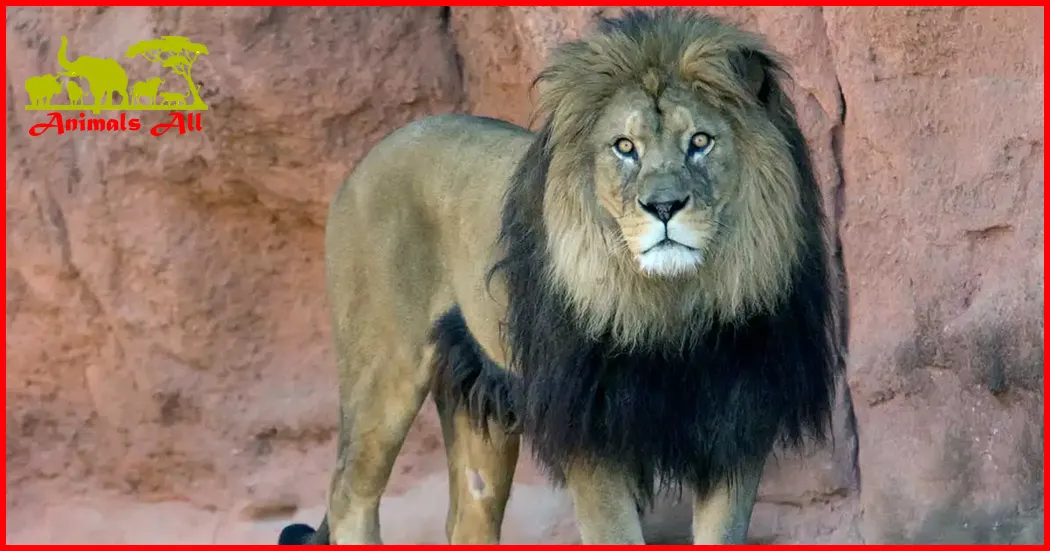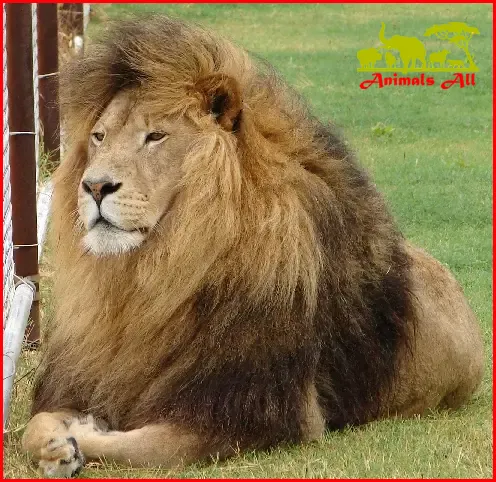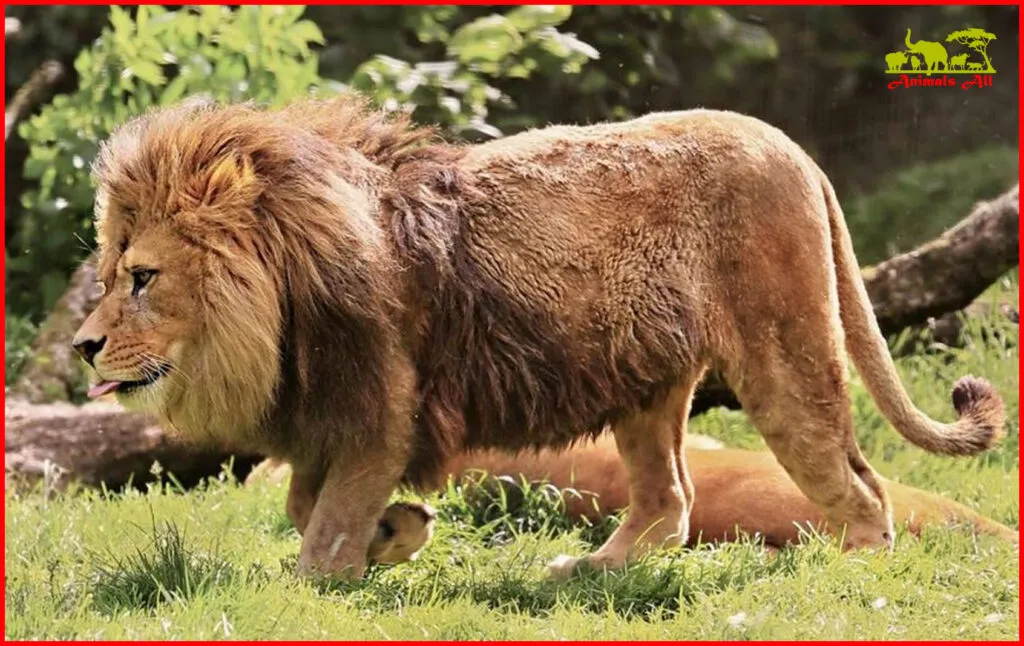
An Introduction and history of North African lion (Barbary lion)
The North African lion is also called the Barbary lion. North African lions have characteristics that are significantly different from other lions. Their skulls are thicker and thicker than those of other lion subspecies. The distance between the orbits is particularly narrow. Interestingly, the skulls of North African lions are particularly similar to those of Asiatic lions. Which seems to imply that the two subspecies are closely related . In addition, the coat color of the North African lion is darker than that of other subspecies. The mane is long and thick. Unfortunately, this subspecies became extinct in 1925.
Basic Information
- Name= North African lion
- subspecies= North African lion
- Subgenus= Felis
- Subfamily= Leopardinae
- StateExtinct= But there are still lions with its bloodline
- Suborder= Schizopoda
- Amen= Vertebrate subphylum
- outline= Mammalia
- Old ways to identify= Large skull, huge body, and developed mane
- English name= North African lion (also called the Barbary lion)
- Nickname= Barbary Lion, Atlas Lion
- genus= Panthera
- Location= Morocco, Algeria, Egypt, Tunisia, and Libya
- kind= lion
- boundary= animal world
- clan= lion clan
- division= Feline
- status= The largest lion in modern times
- Door= Chordata
- binomial method= atlas lion
- Head= Carnivora
- Latin name= Barbary lion
- Subclass= Eutheria
Introduction

The North African lion is known as the “King of Lions”. With a total body length of about 3 meters, a weight of about 260 kilograms. A body length of 140-292 centimeters, it is the largest lion in the world .
What distinguishes North African lions and West African lions from other is that male lions have obvious manes to protect their necks when fighting with each other . The horny spines at the end of the tail are also a distinctive feature. Lions are also the only cats in the cat family that can truly roar, and their roars can travel up to eight or nine kilometers away. Lions have excellent eyesight and can detect prey from far away and hunt in groups, quickly and efficiently. It mainly preys on ungulates, such as wildebeest, eland, zebra sometimes elephants and rhinos. After eating, drink plenty of water and then retreat to your shelter to spend some time .
Extinct

As early as the 16th century, Europeans set foot on North Africa . After arriving here , they often carried out hunting activities, and regarded hunting lions as the most solemn hunting activity, an act of bravery and skill . The lions were hunted one by one amidst the greed and victorious laughter of these people,
North African lion
They not only hunted adult lions, but also captured young lions, brought them back to Europe, and sold them to wealthy people and princes . As Europeans continued to hunt and capture, the number of lions in West and North Africa decreased day by day. Finally, in 1922, the North African lion disappeared forever.
History
As early as 46 BC , during the heyday of Julius Caesar’s rule , he personally funded the construction of a square that reflected the power of the Roman Empire . A commemorative on completion . because
At that time, the Roman Coliseum had a bloodthirsty tradition, so Caesar ordered a large number of wild lions to be driven into the arena and provoked them to fight with well-trained gladiators . After being driven into the dazzling sunlight, these lions began to bite and kill like crazy. Hundreds of gladiators armed with spears, swords and animal nets fought hard, and cheers and cheers came from the audience. There is no record of gladiator casualties in history , and by the time the performance was over, more than 400 lions had fallen to the ground dead .
Almost without exception, the lions that died at the hands of Caesar and the rulers before and after him were captured from their homes in North Africa, in present-day Algeria, Tunisia, Libya, and Egypt. These beasts, known as Barbary lions or Atlas lions, were hunted by the ancient Egyptians. They devoured early Christians and were used by Europeans when designing their coats of arms. Inspire them.
Their monumental statues guard London’s Trafalgar Square , and they are famous for their gorgeous mane that stretches from the shoulder blades to the middle of the back , with tufts of hair at the elbows, and a thick, fringed mane. Extend from the abdomen to the inner thighs. They are more muscular than their fellow lions of the Saharan subspecies , and their broad faces are inlaid with a pair of clear gray eyes, which are the color of sun-bleached sand and slightly lighter than the unique amber color .
More History
By today’s standards, the ancient Romans’ treatment of North African lions was too cruel, and this cruel practice endured throughout history. Long after the collapse of the Roman Empire , North African lions were still mercilessly , although each emperor treated them with varying degrees of cruelty.
By the beginning of the 20th century, all but one remaining population of North African male lions in the cold Atlas mountain ains in Morocco were extinct. Even in that sparsely populated place , they only got a moment of respite. By the 1920s, this small area of refuge had not escaped people’s gunfire, and the last recorded wild North African lion was shot and killed by a farmer in 1922. Except for a handful of skins and bones scattered in European museums, the North African lion appears to have disappeared forever.
However , there is a temporary animal shelter just outside Rabat, the capital of Morocco. Which may hold the key to the mystery of the North African lion’s resurrection. There are 23 lions in Rabat Zoo whose lineage can be trace directly back to their ancestors. live in the Atlas Mountains in the 19th century – North African lions.
Throughout the 19th century, the Berbers living in the Atlas Mountains captured live North African lions and presented them to the Sultan of Morocco in lieu of taxes. In the royal palaces of Marrakech and Fez, these royal lions were sheltered and thrived , while other wild North African male lions had been extinct for a long time. They have been kept at Rabat Zoo since the 1970s , with veterinarian Dr. Brahim Haddane continuing to look after this secluded breeding colony . To ensure they don’t become extinct in the disaster, Hudner has sent 60 North African male lions to zoos around the world.
Kinship
After comparing the skulls of Barbary lions, cave lions, Asiatic lions. Other African lions , it was discover that Barbary lions share a characteristic : a very narrow postorbital bar. This shows that Barbary lions are closely related to lions in northern Africa and Asia. In addition, the southern European lion , which became extinct between 1980 and 100 , may be the connection between them.
Research
If the genes of North African lions still exist , it will be in the bodies of these Moroccan royal lions. Their descendants that they will be found .
To find these genes, a team from the University of Oxford first had to sift through the fur of known North African lion skeletons gathering dust in museums. Oxford’s Wildlife Conservation Research Unit and the Molecular Evolution Research Group have collected samples from living and extinct lions in their respective fields. In addition to tissue and blood , they also collected skeletal specimens . Using modern technology, geneticists have extracted DNA from these long-dead skeletons to provide an easy-to-understand “map” of North Africa’s male lions, and indeed all lions.
Comparisons of DNA from known populations yielded conclusive data that divided lions into distinct subspecies — an issue that has been debated in the scientific community for years. With the exception of an endangered Asian subspecies that has been separated from African lions for about 100,000 years , almost nothing is known about the evolutionary relationships between the different groups. Even for 100-year-old bones, the results of DNA identification are quite clear. However, geneticists faced with the laborious and expensive process of finding markers (gene sequences unique to a certain population) . If these markers exist, and scientists can find them, blood samples take from the lions. They will easily confirm whether they are of North African male ancestry.
More
Although this research is still its infancy, the initial results are encouraging. If the bloodline of the royal lions is as pure as historical records claim. Their descendants will be destined to return to the high mountains of the Atlas Mountains. The most exciting part of this research is the plan developed by Brahim Hudner. A research team at the University of Oxford, and a British conservation organization called Wildlink. To release North African male lions back to their original habitat. The Moroccan government has also set aside 150 square miles (400 square kilometers) of uninhabited territory in the Middle and High Atlas Mountains. Where the first reintroduction will take place.
Once this research leaves the laboratory, the real challenges begin. The reintroduction problems faced by geneticists are even more daunting than the complex molecular makeup . They may have to build fences, stockpile prey, and teach lions that have been bred for generations how to survive. Also including learning that humans are neither their guardians nor prey, nor their hunters. Local residents are the decisive factor in whether the reintroduction plan can be realize. It can only go ahead if they want the lions back.
If the lions can drive tourism and related employment, the plan will be successful. The Berbers clearly support this option, and will set up tourism companies, build and operate hotels and – since the lions are directly related to their livelihood – protect them from harm. The same hunters who saved North African lions from extinction by using them as tax returns may well be able to save them again.


3 thoughts on “An Introduction and history of North African lion (Barbary lion)”
Comments are closed.